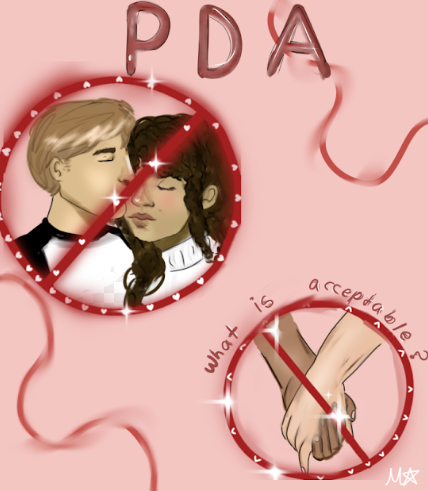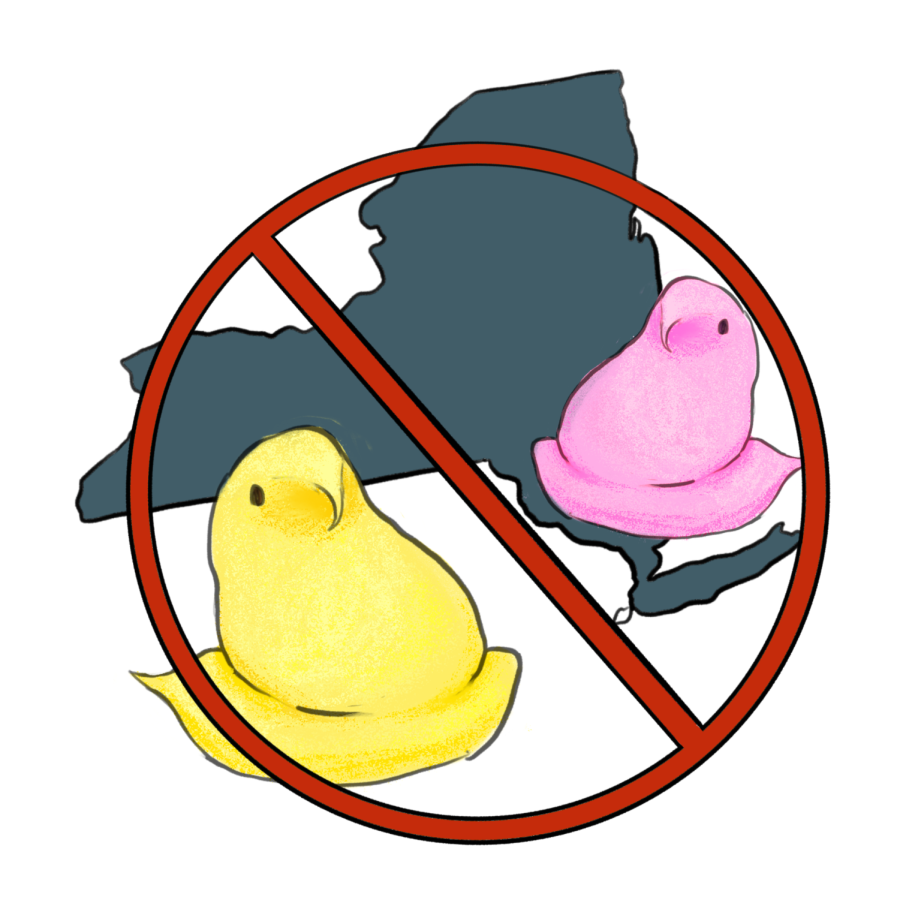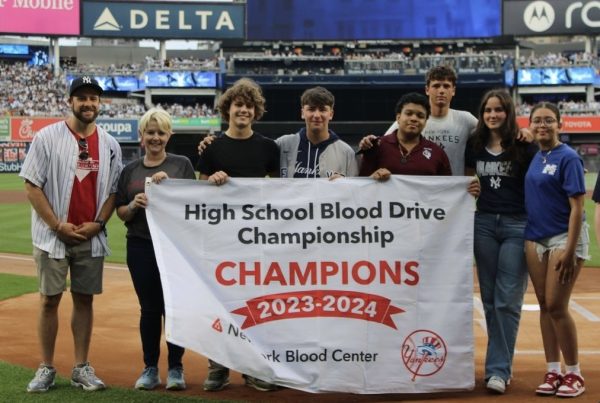Marshmallow Mayhem: NYS Looks to Ban Peeps
The scrumptious marshmallow treat will be banned due to new studies revealing the presence of carcinogens.
Just as people connect candy canes to Christmas and candy corn to Halloween, they instantaneously associate Peeps with Easter. Approximately one billion Peeps are consumed yearly; these beloved confections are often the highlight of children’s Easter baskets, adopted as the marshmallows in the “Chubby Bunny Challenge,” or eaten throughout the year as an enjoyable treat.
However, recent studies suggest that Peeps are likely to cause medical complications such as cancer. This research has led to New York State looking to ban the product.
Although their brilliant colors and irresistible sweetness attract millions of customers annually, Peeps’ cons significantly outweigh their pros. New research implies that six specific flavors of Peeps–Fruit Punch, Hot Tamales, Lavender, Party Cake, Pink, and Wildberry–contain a carcinogenic, or cancer-inducing, component: erythrosine. Commonly referred to as Red Dye No. 3, erythrosine is a vibrant red food coloring produced with petroleum content. According to an article on Health magazine’s website (Health.com), previous experiments have exhibited a positive correlation between erythrosine exposure and the development of cancer in rats. Considering that rats share nearly 70% of their DNA with humans, scientists fear that a similar outcome will be seen in human consumers of the ingredient. Furthermore, there is a proposed interrelationship between children’s susceptibility to neurobehavioral problems and the consumption of artificial food colorings such as Red Dye No. 3, Red No. 40, Yellow No. 5, and Yellow No. 6. Additional products containing these ingredients include candy corn, Hot Tamales, Nerds, Skittles, Smarties, boxed cake mixes, instant rice, and even certain medicines and supplements.
Red Dye No. 3 has been outlawed in the cosmetics industry since the 1990s, so why is it present in countless food products today? Just Born Quality Confections, the company that manufactures Peeps, addresses this question by acknowledging the Food and Drug Administration’s policy: the FDA still approves the use of this ingredient, as stated in a report by the Food Safety Magazine (Food-Safety.com). Moreover, workers behind Just Born assert that they aim to utilize more natural food colorings in their candies instead of artificial ones.
Particularly in California, Red Dye No. 3 is a prevalent topic of discussion. Over 16,000 individuals have signed a petition to ban erythrosine, which is currently under deliberation. Even so, some argue that prohibiting erythrosine-containing products is ultimately unnecessary. Instead, they recommend regulation by controlling the amount of this ingredient that one ingests. Shelly Wegman, a registered dietician at the University of North Carolina Rex Healthcare, announced to Health, “… there’s no information on the quantity it would take for [cancer development] to happen… Definitely, more research is needed.”
One step further in protecting consumers against the harmful effects of Red Dye No. 3 is excluding certain products from stores in New York State. Sadly, this action entails bidding farewell to some of New York’s favorite snacks. People’s fondness regarding these treats may have stemmed from various determinants, such as their delightful tastes or a nostalgic factor. Freshman Hayden Rosa said, “[Peeps] were good in my opinion and remind me of Easter when I was a little kid,” she continued, “but I understand the reason for their discontinuation if they cause cancer.” Freshman Sophia Schoen voiced, “I believe Red Dye No. 3 should be banned because it is a possible carcinogen. We don’t want to take any chances.”
“First Skittles, and now Peeps! At this point, anything can be cancerous,” said freshman Addison Norris, recalling a previous issue pertaining to food coloring in Skittles.“Therefore, it is imperative to check the ingredients of an item before eating,” she expressed. Norris is correct: consumers cannot assume the detriments or lack thereof in any product. Before picking up a brightly colored snack, be sure to look out for Red Dye No. 3!












































